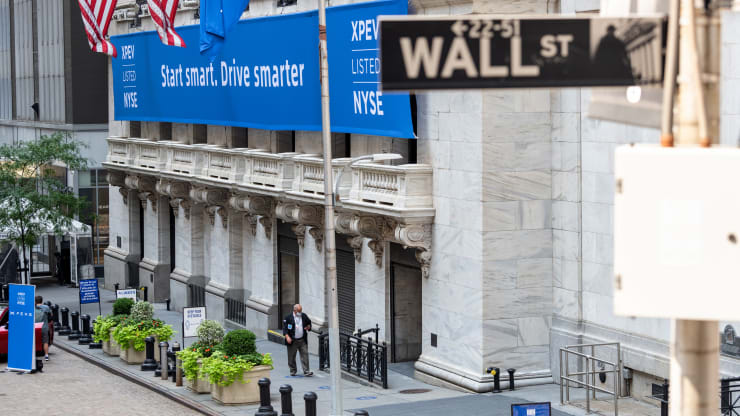Asset prices could be on the cusp of a sharp collapse known as a “Minsky moment,” and may retest lows last seen in March, according to Ron William, market strategist and founder of RW Advisory.

Markets have experienced a broad bullish period in recent months as investors bet on further stimulus from governments and central banks, and the prospect of a coronavirus vaccine. Despite lingering global economic risks from the Covid-19 pandemic and geopolitical tensions, Wednesday saw the S&P 500 and Nasdaq both notch record highs, while the Dow Jones Industrial Average closed above 29,000 points for the first time since February.
A “Minsky moment,” named after economist Hyman Minsky, refers to a sudden market collapse following an unsustainable bull run, which in this case could be fueled by the “easy credit” environment created as a result of unprecedented fiscal and monetary stimulus measures.
Speaking to CNBC’s “Squawk Box Europe” on Thursday, William cited a number of factors as potentially driving this crash, the first of which was the narrow nature of recent market gains, with much of the positive price action in the U.S. driven by tech giants.
“This is this ongoing story of tech street, Wall Street and Main Street all diverging,” he said. “If we look at the equal weighted index of the S&P 500, it has barely broken above its June peak and has actually been flatlining ever since, so we can see there the ’FAANG-tastic divergence, as I call it.”
The U.S. tech megastocks known as the FAANGs (Facebook, Apple, Amazon, Netflix, Google) have been central to the continued momentum stateside, despite the country continuing to be ravaged by the coronavirus pandemic and widespread civil unrest.
William added that the broader Russell 2000 small cap index, which hosts a number of “zombie companies,” was also below its June peak on an equal weighted basis.
“Particularly if we look outside of the U.S. at the rest of the world, the U.K. here in this home base is actually quite negative and we’ve had a new range breakout to the downside,” he added.
Britain’s FTSE 100 index is still down more than 20% for the year, in stark contrast to U.S. markets surpassing their pre-crisis peaks. The S&P 500, for example, is up 10.8% year-to-date.
William also pointed to liquidity and volatility as historical indicators of what could be around the corner.
“ETF (exchange-traded funds) flows on the S&P 500 is at a new record low, and if we take a look at the VIX (real-time index of market volatility expectations), that has also been in an interesting atypical spike up as markets go up, suggesting potential hedging for downside risk,” he added.
The Minsky moment cited by William could see assets fall by “20 to 30 percent or more,” he said, causing the current “V-shaped” recovery to lead to a “rolling W retest of the March crash low.” The S&P fell to 2,237.4 on March 23; this Wednesday it closed at 3,580.84.
Combined with high valuations, negative seasonality of the late-August and early-September period and the upcoming election cycle, William said the market could be looking for pockets of correction. He added that this could be healthy in the long run, bringing about a “multi-year repair period before that long term bull reappears again.”




